Embark on an enchanting journey through Islamabad and its surrounding areas, where each day unfolds with a rich tapestry of historical significance, architectural marvels, and natural beauty. This meticulously planned itinerary offers a comprehensive exploration of Islamabad, Taxila, Murree, and several other key destinations, each presenting unique experiences and insights into the region’s heritage and landscape. These are the top places to visit in Islamabad & it’s surrounding areas, all of these destinations are within 250km radius of Islamabad, most of these are day trips, for some stations we recommend night stay.
Places to Visit in Islamabad
1: Islamabad City Tour
Begin your adventure in Islamabad with a visit to the Faisal Mosque, the largest mosque in Pakistan and an iconic example of contemporary Islamic architecture. Designed by Turkish architect Vedat Dalokay, the mosque stands out for its unconventional design, eschewing traditional domes for a tent-like structure inspired by the Bedouin tents. Surrounded by the Margalla Hills, the mosque can accommodate about 300,000 worshippers, making it a significant spiritual center.
Next, delve into Pakistan’s rich history at the Pakistan Monument and Museum, followed by an afternoon at Dino Valley Amusement Park, a perfect blend of entertainment and dining experiences. Cap off the day with dinner at Monal, renowned for its exquisite cuisine and panoramic views of Islamabad.
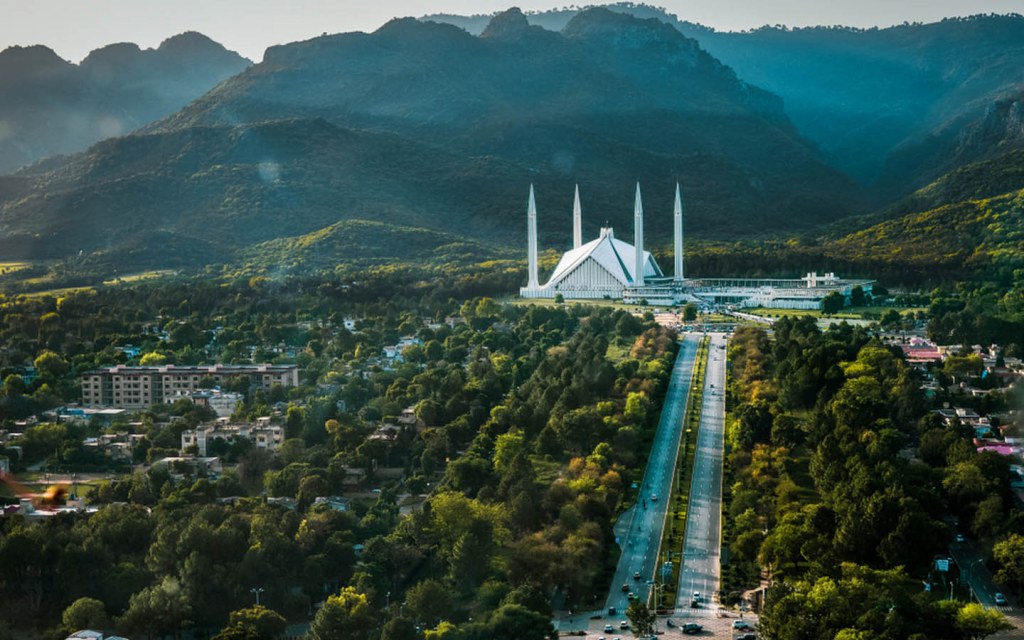





Taxila & Wah Mughal Gardens – A Journey Through Time
Embark on a captivating journey to Taxila, a city that whispers the tales of ancient civilizations, followed by a serene visit to the Wah Mughal Gardens. This day promises a dive into the heart of Pakistan’s storied past and its architectural marvels.
2. Taxila Museum and Surrounding Historical Sites
Your adventure begins at the Taxila Museum, established in 1918, where the essence of Gandharan art, dating from the 1st to the 7th centuries CE, is preserved. This museum, nestled in Taxila, Punjab, is not just a repository but a narrative of ancient wisdom, showcasing over 4000 artifacts including stone, stucco, terracotta, and semiprecious stones. These artifacts celebrate the Buddhist, Hindu, and Jain religions, unearthed from ancient cities, stupas, and monasteries.
Highlights include the Gandhara art gallery, home to an extensive collection of Buddhist sculptures, the numismatic collection featuring coins from the Indo-Greeks to the late Kushans, and unique artifacts such as burnt birch bark manuscripts in Brahmi and Sanskrit languages, showcasing the linguistic diversity and scholarly pursuits of ancient Taxila.
Surrounding the museum are numerous historical sites, such as the ancient stupas and the ruins of three ancient cities, inviting you to step directly into the pages of history.
Discover the Ancient Splendors of Taxila: A Guide for Tourists Exploring Pakistan
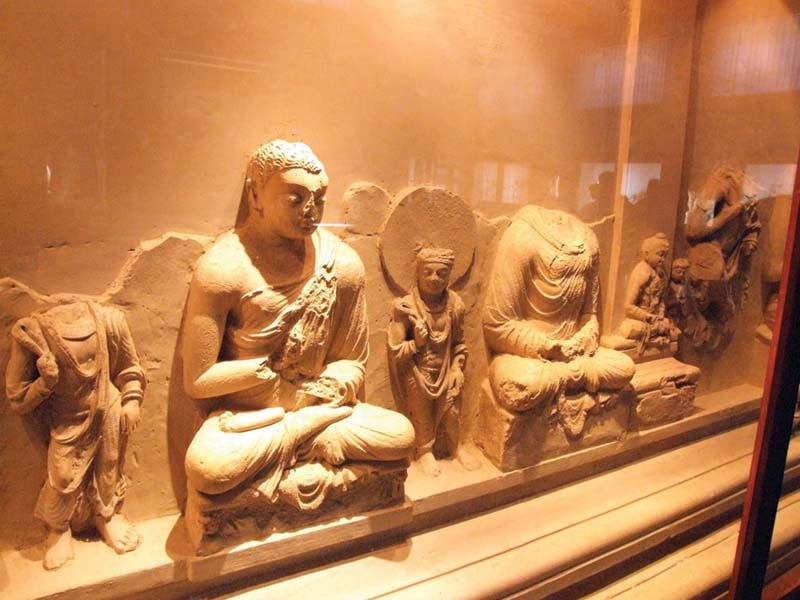





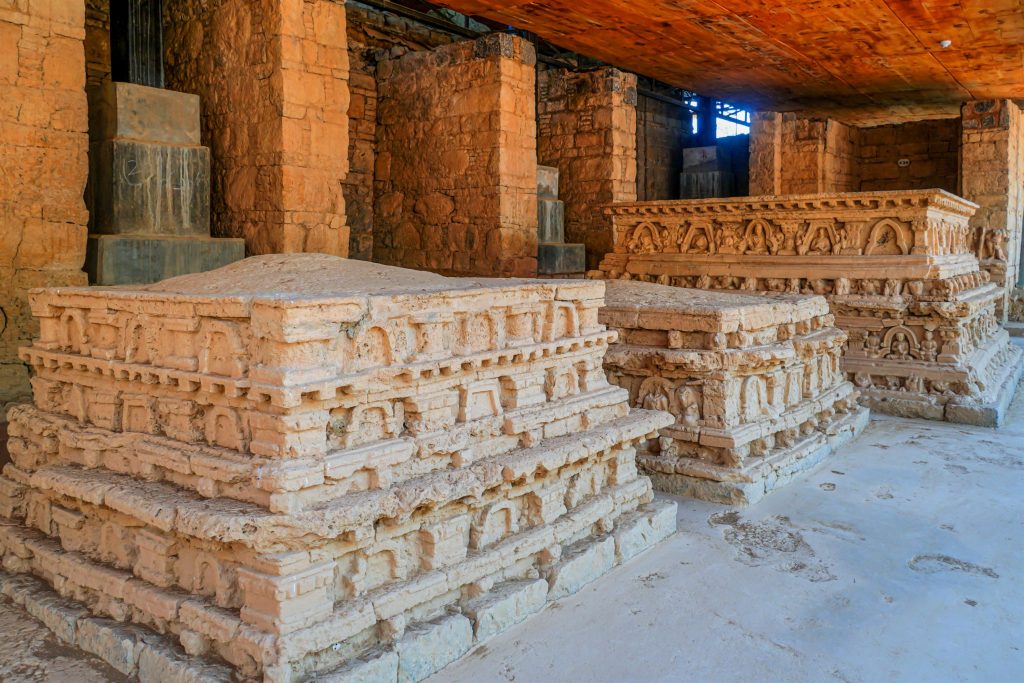
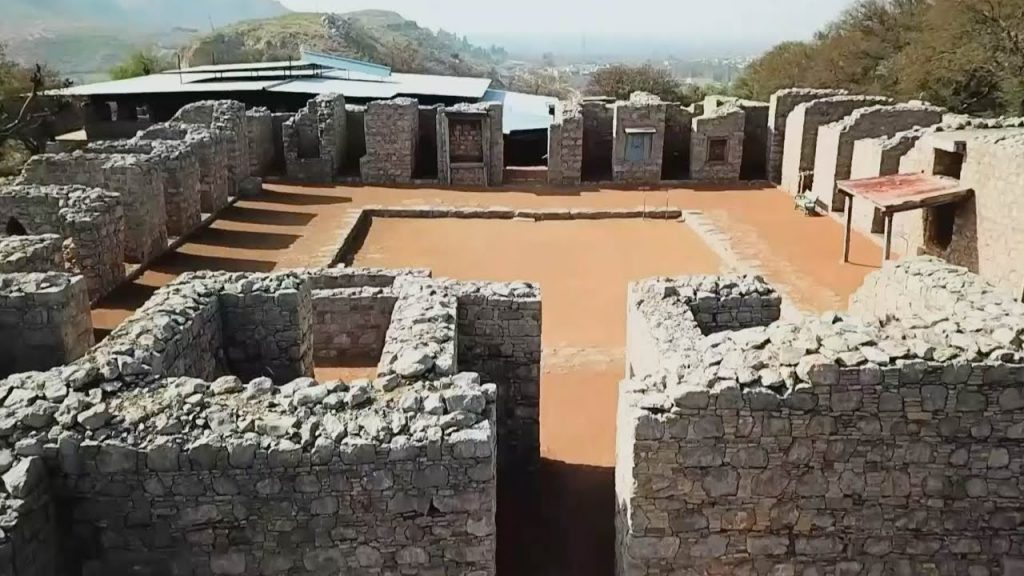




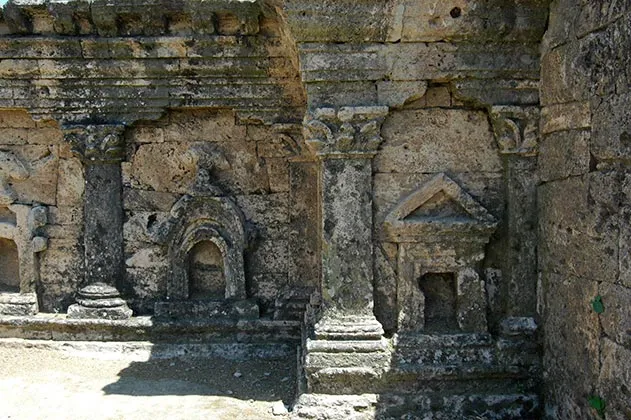
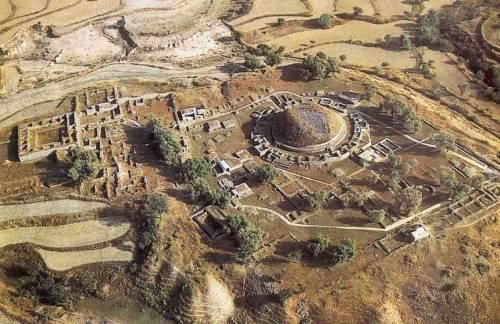
3. Wah Mughal Gardens – An Architectural Marvel
After immersing yourself in the ancient wonders of Taxila, proceed to the Wah Mughal Gardens, a splendid example of Mughal architectural brilliance. Although specific details about the gardens are scarce in the sources consulted, Mughal gardens are known for their symmetrical beauty, intricate design, and the harmonious blend of architecture and nature, typically featuring flowing water, ornate pathways, and lush greenery. These gardens served as a place of retreat and leisure for Mughal emperors and continue to enchant visitors with their timeless beauty.
As you wander through these historical and architectural marvels, you’re not just walking on the soil of Pakistan but also traversing through the corridors of time. Each artifact, each ruin, and each garden pathway tell a story of civilizations that thrived, scholars who pondered the mysteries of life, and artisans who immortalized their beliefs in stone and stucco.
For a deeper exploration of the Taxila Museum and its astonishing collections, consider visiting the museum’s official website or refer to detailed articles on platforms like Wikipedia and specialized ultural heritage websites. This journey through Taxila and the Wah Mughal Gardens offers not just a glimpse into the past but also a reflection on the cultural and historical tapestry that shapes present-day Pakistan.
Explore the Enchanting Wah Mughal Gardens: A Hidden Gem in Pakistan’s Historical Tapestry






4. Murree & The Countryside – A Serene Escape
Embark on a refreshing journey to Murree, a picturesque hill station nestled in the Galyat region of the Pir Panjal range. With an elevation of 7,517 feet, Murree offers a tranquil retreat from the hustle and bustle of city life. Known for its scenic beauty, lush green landscapes, and cool climate, Murree has been a popular summer retreat since the 18th century.
Exploring Murree’s Natural Beauty
Start your day by immersing yourself in the natural scenery and refreshing atmosphere of Murree. The area is renowned for its resorts, mountains, and valleys, offering visitors the chance to enjoy the resh air, dense greenery, and serene ambiance. Murree serves as an ideal hub for day trips to nearby attractions such as Nathia Gali, Ayubia, Patriata, Mukspuri Galyat and Bhurban.
Notable Places to Visit
- The Mall: The main shopping street in Murree, bustling with shops, markets, hotels, and restaurants. It’s a great place to stroll, shop, and dine.
- Kashmir Point: Offering breathtaking views of the Kashmir mountains. It’s a perfect spot for photography and enjoying the natural beauty.
- Pindi Point: Known for its chairlifts, offering panoramic views of the surrounding hills and valleys.
- Patriata (New Murree): Famous for its cable cars and chair lifts, providing an adventurous experience with stunning views.
In the evening, enjoy a scenic drive or a leisurely walk along the Murree Expressway. The expressway itself is a tourist attraction, offering picturesque views of nature and an enjoyable experience. Murree’s countryside is dotted with quaint spots for dinner with views, ensuring a memorable end to your day exploring the hills.
Travel and Clothing Tips
Getting around in Murree can be challenging due to narrow roads and heavy traffic during special holidays like Eid. The weather in Murree can be unpredictable; pack light clothes for sunny days, and bring warm clothes and an umbrella for cooler temperatures or unexpected rainfall.
Murree’s allure lies in its blend of natural beauty, historical significance, and the warmth of its local culture. Whether you’re seeking adventure, relaxation, or simply a retreat into nature, Murree and its surroundings promise an enriching experience.









Rawal Lake & Lok Virsa Museum – A Cultural and Natural Exploration
5. Rawal Lake – A Serene Getaway
Start your day with a visit to Rawal Lake, a man-made reservoir that serves as a primary water source for the cities of Islamabad and Rawalpindi. Surrounded by lush greenery and set against the backdrop of the Margalla Hills, the lake is a haven for nature lovers and outdoor enthusiasts. Engage in a variety of activities such as boating, bird watching, and leisurely walks along the landscaped gardens. Rawal Lake is home to a rich variety of wildlife, including red foxes, Indian pangolins, and a multitude of bird species, making it a fantastic spot for wildlife spotting.
Lake View Park, located alongside Rawal Lake, offers a plethora of activities for visitors of all ages. The park features picnic areas, a bird aviary, adventure sports facilities, and amusement rides. It’s an ideal place for families and individuals alike to enjoy a day full of fun and relaxation. Lake View Park can be extremely crowded, if you don’t like crowded areas, you can skip this.
Reflection and Relaxation
Conclude your trip with a reflective stroll or a serene sit-down near Rawal Lake, absorbing the tranquillity of the environment as the sun sets. The picturesque views of the lake against the Margalla Hills offer a perfect backdrop for evening relaxation and contemplation.
Throughout this day, you’ll have traversed the realms of natural beauty and cultural richness that define Islamabad and its surroundings. From the serene waters of Rawal Lake to the vibrant exhibits of the Lok Virsa Museum, this day promises a fulfilling and enriching experience that showcases the best of Pakistan’s natural landscapes and cultural heritage.

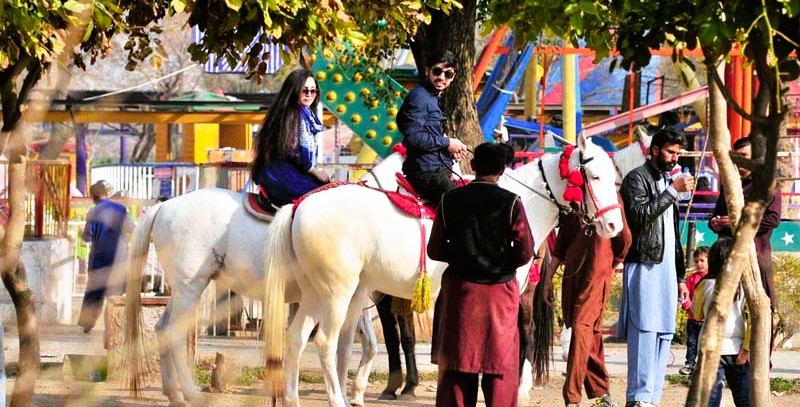





6. Lok Virsa Museum – A Dive into Pakistan’s Rich Heritage
After experiencing the natural beauty of Rawal Lake, shift your focus to Pakistan’s rich cultural tapestry at the Lok Virsa Museum. This museum is dedicated to preserving, documenting, and exhibiting the living cultures of Pakistan. Through its extensive collections and displays, the Lok Virsa Museum offers insights into the arts, crafts, and traditions of various communities across Pakistan. From traditional costumes and musical instruments to folk art and architecture, the museum provides a comprehensive overview of the country’s diverse cultural heritage.


Rohtas Fort & Mangla Dam – A Historical and Architectural Odyssey
Explore the historic Rohtas Fort, a stunning example of 16th-century military architecture. Then, visit the Mangla Dam, marvelling at its grandeur and the surrounding landscapes.
7. Rohtas Fort – A Symbol of Strength and Strategy
Rohtas Fort, a masterpiece of 16th-century military architecture, stands near the city of Dina in Jhelum, Punjab, Pakistan. Constructed by Raja Todar Mal under Sher Shah Suri’s orders, it represents a blend of architectural and artistic traditions from Turkey and the Indian subcontinent, creating a precedent for Mughal architecture. Sher Shah Suri initiated the construction in 1541 after defeating the Mughal emperor Humayun, aiming to prevent his return from Persia and to suppress the local Gakhar tribes of Punjab. The fort, notable for its strategic placement and formidable structure, encompasses massive masonry walls spanning over four kilometers, lined with 68 bastions and pierced by 12 monumental gates, showcasing the early Muslim military architecture in central and south Asia.
The fort’s layout, designed to follow the contours of its hilltop site, includes a citadel separated from the rest of the structure, showcasing an irregular triangle shape. Despite its primary military purpose, it features a beautiful mosque known as Shahi Masjid near the Kabuli Gate and the later-added Haveli Man Singh during the Mughal period. The fort’s design was significantly influenced by the introduction of gunpowder and cannon, leading to a new form of fortification that had a profound impact on subsequent architectural developments in the Mughal empire and beyond.
Discover Rohtas Fort – UNESCO World Heritage Site




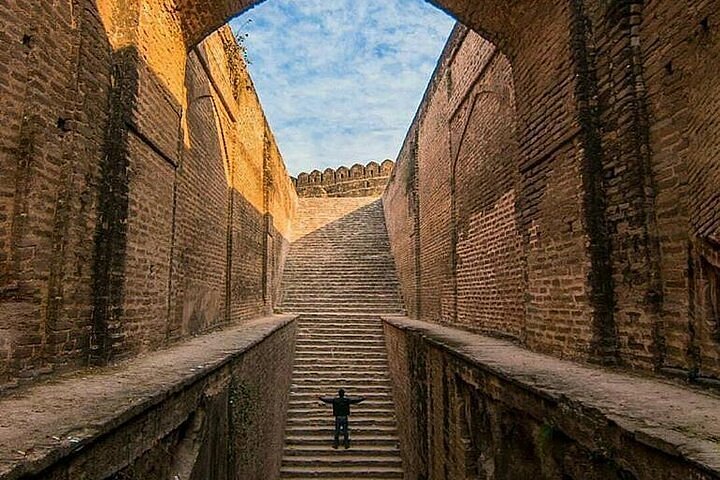
8. Mangla Dam – A Modern Marvel
Transitioning from the historical depths of Rohtas Fort, a visit to Mangla Dam offers a contrast with its modern engineering marvel situated in the Mirpur District of Azad Kashmir, Pakistan. As one of the largest dams in the world, Mangla Dam plays a crucial role in water storage, flood control, and hydroelectric power generation for Pakistan. Constructed in the 1960s on the Jhelum River, the dam has significantly contributed to the country’s agricultural and energy sectors.
Mangla Fort – An Extra Touch of History
Near the Mangla Dam, the lesser-known Mangla Fort, submerged under the dam’s reservoir, adds another layer to the region’s historical tapestry. While much of it is underwater, the fort’s existence speaks to the area’s rich history before the modern era of dam construction.
A Day of Contrasts and Continuities
Your journey from the historical fortifications of Rohtas, echoing the tales of power struggles and architectural ingenuity, to the contemporary achievements represented by Mangla Dam, encapsulates the rich tapestry of Pakistan’s cultural and historical landscape. This day not only offers a dive into the country’s past military strategies and architectural marvels but also showcases the modern advancements contributing to its present and future.
For a more in-depth exploration of Rohtas Fort and its significance, UNESCO’s World Heritage Centre provides detailed insights into its architecture, history, and the role it played in shaping the region’s cultural heritage.

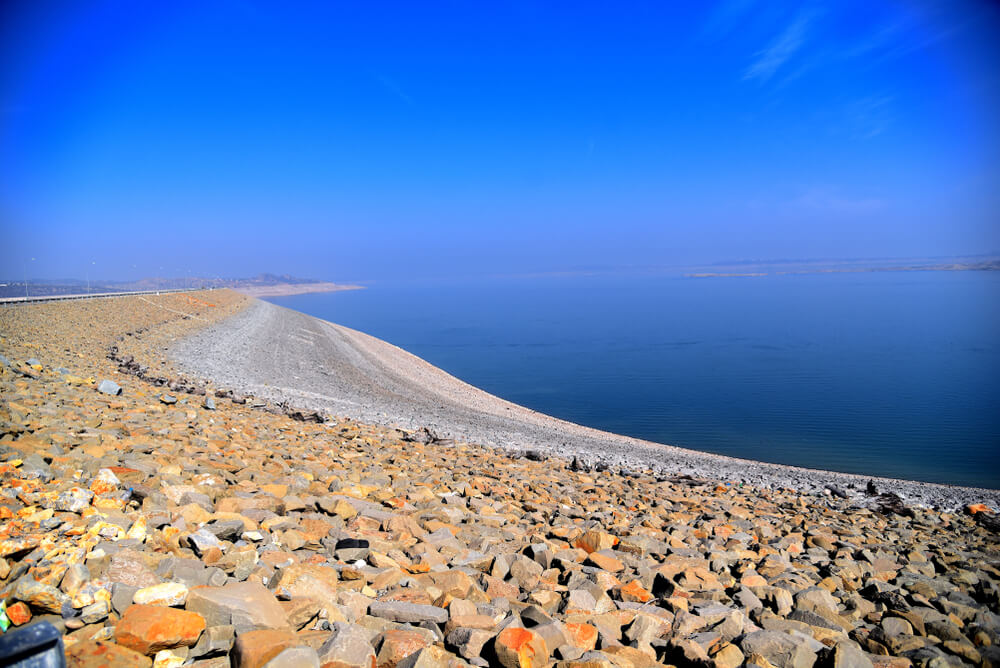



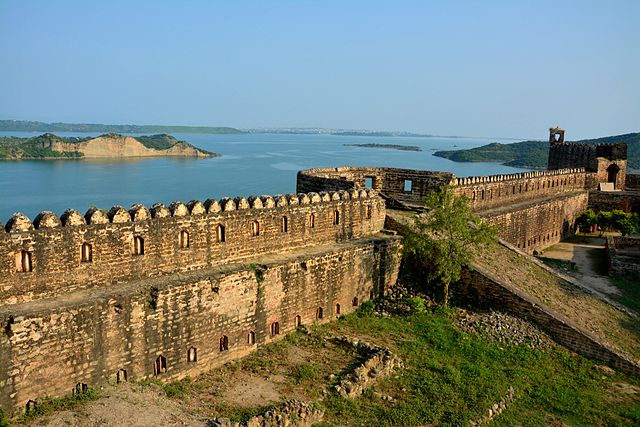

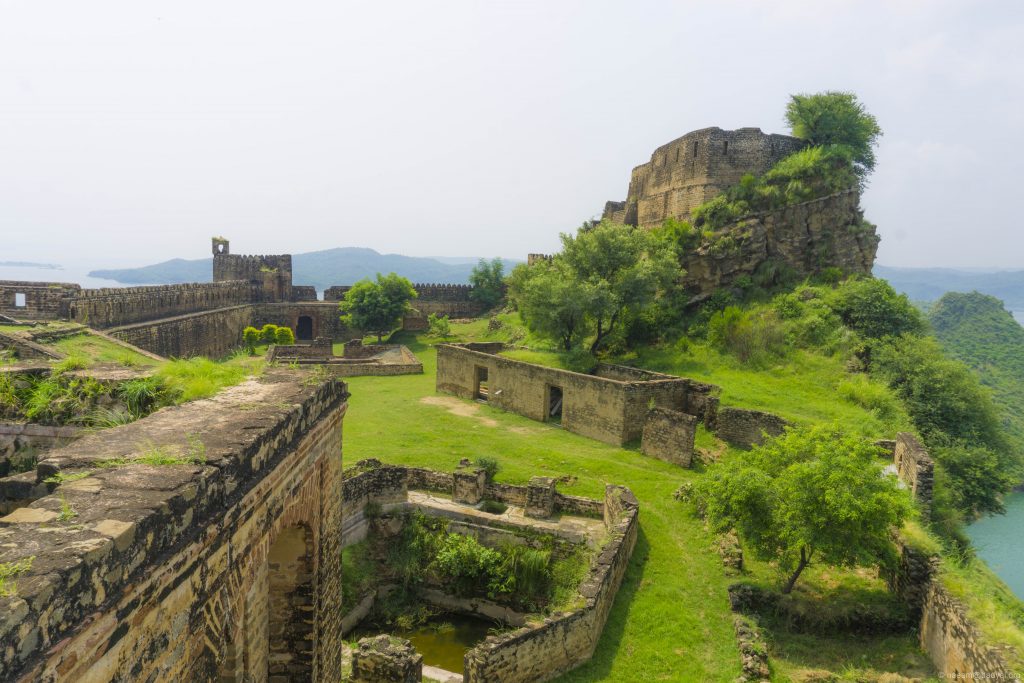

9. Khanpur Dam & Mabali Island – A Day of Adventure and Serenity
Indulge in water sports or simply soak in the natural beauty at Khanpur Dam and Mabali Island, perfect spots for adventure and relaxation.
Morning to Afternoon: Exploring Khanpur Dam
Khanpur Dam, nestled on the Haro River in Khyber Pakhtunkhwa, is a popular destination about 50 km from Islamabad, offering a blend of natural beauty and adventurous activities. Surrounded by the majestic mountains of the Potohar plateau, the dam forms the serene Khanpur Lake, making it an idyllic spot for picnics, hiking, and camping. The dam is not only a source of drinking water for Islamabad and Rawalpindi but also a hub for recreational activities.
Visitors can enjoy a variety of water sports and other adventure activities at Khanpur Dam. From breathtaking mountain views to boating, swimming in the peaceful waters of Khanpur Lake, cliff jumping, jet skiing, fishing, kayaking, and camping, there’s something for everyone looking for an adrenaline rush or a peaceful escape in nature. The dam also provides a unique opportunity to visit historical sites nearby, such as the Bhamala Buddhist Complex and Rajgan Mosque, adding a cultural dimension to your visit.
Mabali Island
Mabali Island offers a tranquil getaway from the bustling city life. The island is a unique attraction within Khanpur Dam area, featuring a small zoo among other attractions. It’s a place where visitors can enjoy the solitude and beauty of being on an island in the middle of a vast lake. Boating and fishing near the island are popular activities that promise a serene experience away from the mainland’s hustle and bustle.
Staying at Khanpur Dam
For those wishing to extend their visit, several accommodation options near Khanpur Dam include Mabali Island Resort, Gandhara Castle Resort, Royal Galaxy Guest, and Executive Residency. With room rates starting as low as around PKR 3,000, these establishments offer a comfortable stay with varying amenities, ensuring a memorable visit to this scenic location.
A Day of Varied Experiences
Khanpur Dam and Mabali Island provide a perfect mix of adventure, relaxation, and cultural exploration. Whether you’re an adrenaline junkie, a nature lover, or a history buff, this destination has something to offer. The breathtaking scenery, coupled with a wide range of activities, makes for an unforgettable experience that appeals to visitors of all ages and interests.
So, pack your bags, grab your camera, and set off for a day filled with adventure and serene beauty at Khanpur Dam and Mabali Island, ensuring to capture the moments that make your visit truly special.







10. Siri Paye Meadows – An Unforgettable Escape into Nature’s Embrace
Embark on a day filled with serenity and adventure as you explore the enchanting Siri Paye Meadows, a verdant treasure nestled in the heart of Shogran Valley. This majestic location offers a unique blend of natural beauty, tranquility, and outdoor activities that cater to every kind of traveler.
Getting There: Siri Paye Meadows, accessible from Shogran, presents a journey as remarkable as the destination itself. The most convenient route to Shogran is by private vehicle from Islamabad, approximately a four-hour drive. Upon reaching Kiwai, switch to a jeep for a thrilling half-hour ride through breathtaking landscapes to Shogran. Jeep fares and arrangements vary, but group tours and private trips are readily available from major cities like Lahore, Islamabad, and Karachi.
Accommodations and Dining: Shogran hosts a range of accommodations from cozy cottages at Pine Park Hotel to the more rustic charm of camping in Siri Paye itself. Whether you prefer the comfort of a hotel or the adventure of spending a night under the stars, Shogran caters to all preferences. For a memorable start to your day, consider dining amidst the natural beauty of Kiwai, where restaurants offer unique experiences such as breakfast near a waterfall.
Activities and Attractions: Siri Paye Meadows is not just about the stunning landscapes; it’s about the experiences it offers. From trekking and jeep rides to the iconic swing overlooking the meadows, every moment promises to be unforgettable. Horseback riding offers a leisurely way to explore the lush greenery, while the serene Siri Paye Lake invites moments of reflection. For the more adventurous, camping in the meadows provides an unparalleled opportunity to connect with nature. Short hikes around Shogran reveal hidden gems and viewpoints, each offering a new perspective on the valley’s beauty. And what’s a visit to the northern areas without a night by the bonfire, sharing stories and warmth under a starlit sky?.
Best Time to Visit: The optimal time to visit Shogran and Siri Paye Meadows is during the summer months, from June to August, when the weather is pleasant, and the meadows are at their most vibrant. However, those seeking the quiet beauty of a winter landscape will find the snowy vistas equally enchanting, though facilities may be more limited during this season.
Safety and Preparation: While Shogran and Siri Paye are welcoming to travelers, it’s essential to prepare adequately. Check road conditions, especially during winter, and be mindful of the weather changes common in mountainous areas. For female travelers and solo adventurers, it’s advised to take standard safety precautions, as is typical for travel in remote areas.
Exploring Beyond: Shogran serves as a perfect base for further adventures into the northern regions of Pakistan. From the bustling tourist town of Naran to the serene Hunza Valley, the possibilities for exploration are endless. Each destination offers its own unique set of attractions, from lakes and peaks to cultural and historical sites, promising more adventures for those captivated by the beauty of northern Pakistan.
Siri Paye Meadows, with its breathtaking beauty and myriad activities, stands as a testament to the natural wonders that Pakistan has to offer. It’s a place where each moment is a memory in the making, inviting travelers to immerse themselves in the tranquility and majesty of nature.



Katas Raj Temples to Swaik Lake to Khewra Salt Mines – A Journey Through Time and Nature
Discover the ancient Katas Raj Temples, followed by a visit to Swaik Lake and the Khewra Salt Mines, the world’s second-largest salt mine, known for its stunning salt formations.
11. Katas Raj Temples
Start your day with a visit to the Katas Raj Temples, a captivating complex of several Hindu temples dating back to between 615-950 CE, dedicated to Lord Shiva. These temples are not only significant for their religious importance but also stand as a testament to the architectural prowess of ancient times. The complex is steeped in mythology, believed to have been visited by the Pandava brothers during their exile, and where Shiva’s tears formed the sacred pond, making it a profound spiritual site. The temples, including the beautifully adorned sanctuaries and havan kunds, are marvels of ancient craftsmanship and devotion.



12. Swaik Lake
After exploring the ancient wonders of Katas Raj, head towards the tranquil Swaik Lake. This hidden gem offers a peaceful retreat into nature. It’s a perfect spot for picnics, swimming, or simply enjoying the serene surroundings. The lake’s clear waters and lush green settings provide a refreshing contrast to the historical explorations of the morning.




13. Khewra Salt Mines
Conclude your day with a visit to the Khewra Salt Mines, the world’s second-largest salt mine and a mesmerizing marvel of nature. Discovered around 320 BC, these mines are a source of pink Himalayan salt and offer an extraordinary sight with their illuminated salt formations, healthful air, and the historic Salt Mosque made entirely of salt bricks. A guided tour inside the mine reveals its historical significance and the fascinating process of salt extraction that has been ongoing for centuries.
This day offers a unique blend of spiritual, natural, and historical explorations. From the sacred ambiance of Katas Raj Temples to the natural beauty of Swaik Lake and the underground wonders of Khewra Salt Mines, it promises an enriching experience that captures the diverse essence of Pakistan’s heritage and landscapes. Remember to check the opening hours and any need for advance booking, especially for Khewra Salt Mines, to ensure a smooth and memorable journey through these incredible sites.


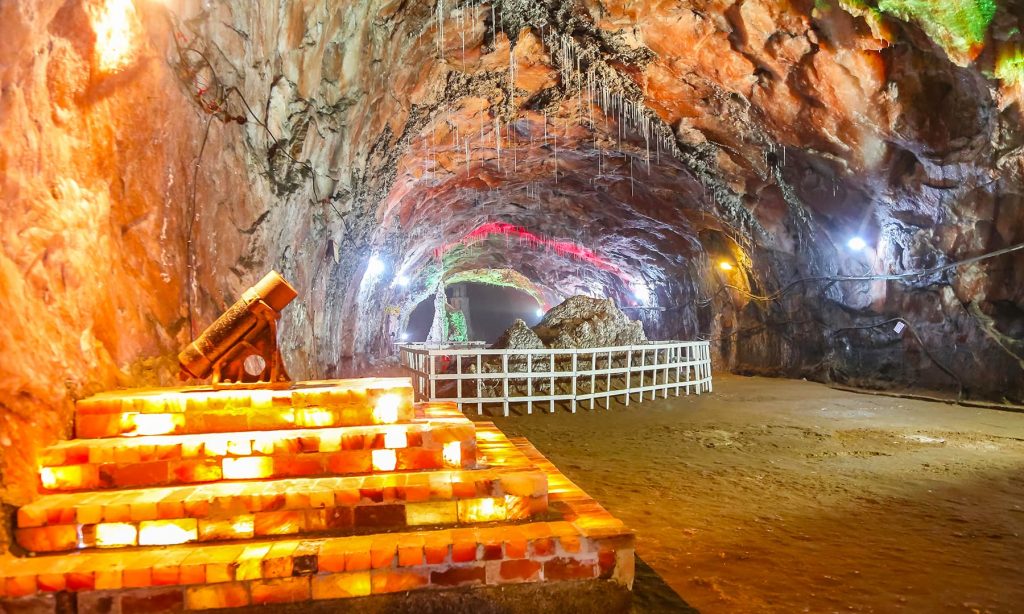

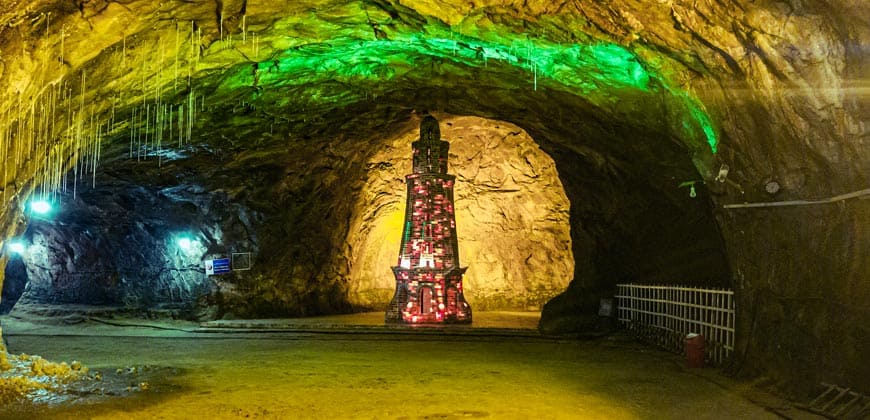

14. Panjpeer Rocks
Embarking on a one-day journey from Islamabad to Panjpeer Rocks presents an unparalleled opportunity to immerse oneself in the raw beauty of Pakistan’s landscapes. This article aims to guide adventure enthusiasts through a meticulously planned itinerary, shedding light on the historical significance, geographical marvels, and cultural tapestry of Panjpeer Rocks.
Journey Overview
Panjpeer Rocks, nestled in the Kahuta district, Rawalpindi, Punjab, is approximately 70 kilometers from Islamabad, making it an ideal destination for a day trip. The site, standing proudly as the highest point of the Danoi Ridge in Kotli Sattian, is steeped in legend, named after five saints believed to have settled in this area of rugged beauty.
Departure from Islamabad
- The journey begins at 8:00 AM from Islamabad, with an anticipated travel time of approximately 2 hours by car, you will enjoy one of the most scenic drive leading directly to the base of Panjpeer Rocks.
- Upon arrival, visitors are greeted by the majestic sight of Panjpeer Rocks. A leisurely exploration of the area is recommended, allowing for ample photographic opportunities of the surrounding valleys and hills.
- A short hike is planned to one of the elevated points, offering panoramic views and a chance to immerse in nature’s tranquility.
- Enjoy a picnic lunch amid the serene backdrop of Panjpeer Rocks.
What to Expect
Geographical Marvels and Activities
Panjpeer Rocks boasts breathtaking natural landscapes, from lush green forests to the Narar Waterfall, offering an idyllic setting for hiking, photography, and relaxation. The trek from Narar village to the summit is memorable, passing through spectacular waterfalls, dense forests, and magnificent peaks.
Cultural and Historical Significance
The site’s name, deriving from the legend of five saints, adds a mystical element to the visit. The shrine atop the mountain and the peaceful courtyard surrounded by ancient Banyan trees provide a glimpse into the spiritual history of Panjpeer.
Tips for Travelers
- Preparation: Wear comfortable hiking shoes and carry water, snacks, and a first aid kit.
- Best Time to Visit: The weather at Panjpeer Rocks is subtropical, with temperatures varying across seasons. While each season has its charm, spring (March to May) and autumn (Mid-September to Mid-November) offer the most pleasant climate for outdoor activities.
Conclusion
A day trip to Panjpeer Rocks from Islamabad is not just a journey through the breathtaking landscapes of Pakistan but a deep dive into the rich tapestry of history, culture, and spirituality that defines this region. This experience promises not only the thrill of adventure but also a profound sense of peace and connection with nature. Whether you’re an avid trekker, a photography enthusiast, or someone seeking solace away from the hustle and bustle of city life, Panjpeer Rocks beckons with open arms, ready to offer an unforgettable escapade.












Shounter Valley or Neelum Valley
15. Neelum Valley
Embark on a scenic drive to Neelum Valley, stopping at key viewpoints and the captivating Kutton Jagran Waterfall. Explore the stunning landscapes of Shounter Valley, offering an adventurous conclusion to your journey with an overnight stay if feasible.
Embark on a journey to Neelum Valley, renowned for its breathtaking vistas. The route is dotted with captivating viewpoints that offer panoramic views of the valley’s lush landscapes and azure rivers. One must not miss the Kutton Jagran Waterfall, a marvel of nature where water cascades down in a mesmerizing flow, providing an ideal spot for relaxation and photography.



16. Shounter Valley
Venture into Shounter Valley, where rugged terrains promise an adventurous exploration. An overnight stay here, amidst serene beauty, rounds off this enriching experience, leaving travelers with lasting memories of Pakistan’s natural splendor. Read more about Shounter Valley & Neelum Valley
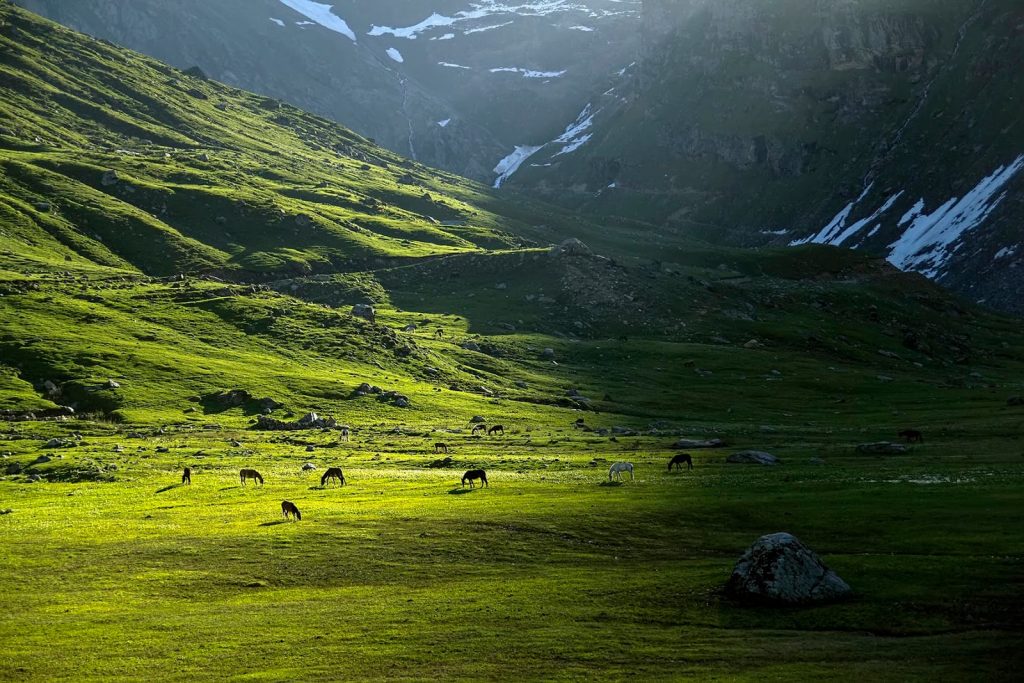


17. Islamabad Hiking Trails
Conclude your adventure with a hike on the trails of Margalla Hills, offering breathtaking views and a serene connection with nature. Trails 5 and 6 are highly recommended, each offering unique vistas and experiences.
This itinerary not only highlights the architectural and natural wonders around Islamabad but also immerses you in the cultural and historical essence of the region. From the spiritual grandeur of the Faisal Mosque to the serene landscapes of Murree and the historical depths of Taxila, each day promises a new discovery and unforgettable experiences.
For visitors traveling from Islamabad to these sites, it’s crucial to consider travel times and distances. Islamabad serves as a convenient starting point for these excursions, with most destinations accessible within a few hours’ drive, ensuring that you can comfortably return to the city or proceed to the next attraction on your itinerary. However, specific distances and travel times would depend on the exact locations and the mode of transportation chosen.
Before embarking on your journey, ensure to check the current status of attractions, weather conditions, and any travel advisories to enjoy a safe and enriching experience exploring the beauty and heritage of Pakistan.






18. Shah Allah Ditta Caves: Discover the Hidden Gem of Islamabad
Nestled in the serene outskirts of Islamabad, the Shah Allah Ditta Caves present a fascinating journey through history and nature. This ancient site, believed to be over 700 years old, offers a glimpse into the past with its historical significance and breathtaking natural beauty. Among the myriad things to do in Islamabad, visiting Shah Allah Ditta not only promises an adventure for history buffs but also provides a peaceful retreat for nature lovers. You will have one of the most beautiful sunset, enjoy it with a cup of tea at a local cafe.
A Step Back in Time
Shah Allah Ditta is a village named after a Mughal-era Dervish and is famed for its historical caves and ancient caravanserai. The caves are said to have been used by Buddhist monks as a meditation spot over 2,300 years ago, marking the area as a significant spiritual and historical site. The presence of Alexander the Great’s troops, as well as figures from the Mughal dynasty, adds layers of historical depth to this captivating location.
Natural Splendor and Serenity
Apart from its historical allure, Shah Allah Ditta stands as a testament to the natural beauty that Islamabad is renowned for. The village is cradled by lush greenery and set against the backdrop of the Margalla Hills, offering panoramic views that are sure to leave visitors in awe. The tranquility of this place provides a perfect escape from the hustle and bustle of the city life, making it an ideal spot for picnics, nature walks, and quiet reflection.
Things to Do in Islamabad: A Diverse Offering
While exploring Shah Allah Ditta and its ancient wonders is a must-do, Islamabad boasts a plethora of other attractions and activities. Among other things to do in Islamabad, you can visit the iconic Faisal Mosque, wander through the serene trails of the Margalla Hills, or explore the rich collections at the Pakistan Museum of Natural History. Each destination offers a unique experience, catering to a wide array of interests from cultural heritage to natural exploration.
Conclusion
In conclusion, among the many things to do in Islamabad, visiting Shah Allah Ditta is a unique experience that offers both historical richness and natural beauty. This hidden gem provides a perfect blend of adventure, education, and relaxation. Whether you’re a history enthusiast, a nature lover, or just someone looking to explore the diverse attractions of Islamabad, Shah Allah Ditta is a destination that should not be missed.
19. Discovering Abbottabad and Hazara Waterfalls in Jab Valley
Abbottabad, a picturesque city in the Hazara region of Khyber Pakhtunkhwa, Pakistan, is a hub for history enthusiasts and nature lovers alike. With its colonial-era architecture and the gateway to stunning natural landscapes, it offers a diverse array of attractions. Among these, the Hazara Waterfalls in Jab Valley stand out as a breathtaking natural wonder, just a short drive from the city.
Abbottabad: This charming city boasts a rich history and serene parks, like the Lady Garden Public Park, perfect for leisurely walks and picnics. The colonial architecture, including the Abbottabad Church, adds a nostalgic charm to the city.
Hazara Waterfalls in Jab Valley: A hidden gem in the lush landscapes of Hazara, these waterfalls offer a tranquil retreat with their cascading waters and verdant surroundings. Ideal for trekking, picnicking, and photography, the waterfalls provide a serene escape into nature.
When to Visit: The best time for exploring both Abbottabad and the Hazara Waterfalls is between March and November, when the weather is pleasant, making outdoor activities enjoyable.
Tips for Visitors: Comfortable hiking shoes and essentials like water and snacks are recommended, especially if you plan to explore the surrounding trails or spend a day in the great outdoors.
In summary, Abbottabad and the Hazara Waterfalls in Jab Valley offer a mix of cultural history and natural splendor, making them must-visit destinations for anyone traveling through Pakistan’s Hazara region.
20. Swat, Kalam, Jahaz Banda, and Kumrat Valley: Embarking on a Memorable Journey
The journey from Islamabad to the enchanting valleys of Swat, Kalam, Jahaz Banda, and finally, Kumrat Valley is a traveler’s dream, unfolding the unparalleled beauty of Pakistan’s northern landscapes. This adventure is far from a day trip; to truly soak in the beauty and tranquility of these regions, it’s recommended to spend at least 3 to 4 days exploring the diverse landscapes, cultural heritage, and serene natural wonders these places have to offer.
Islamabad to Swat: Gateway to the Magical North
Your journey begins in Islamabad, the capital city, from where you head to Swat Valley, famously known as the “Switzerland of the East” due to its stunning mountain scenery and lush green valleys. The drive to Swat is an adventure in itself, offering picturesque views and a glimpse into the life of the regions you pass through.
Swat to Kalam: A Serene Retreat
After exploring Swat’s rich cultural sites and natural beauty, your next destination is Kalam, which is renowned for its majestic landscapes, including lush green hills, thick forests, and crystal-clear rivers. A night stay in Kalam is essential to fully experience the tranquility of this mountain town. Whether you choose a cozy hotel or a riverside guesthouse, the peaceful environment and the sound of the flowing river promise a restful night’s sleep.
Kalam to Jahaz Banda: Into the Wilderness
From Kalam, venture towards Jahaz Banda, a breathtakingly beautiful meadow located in the Upper Dir district. This part of the journey requires a bit of trekking, taking you through dense forests and rugged terrain, but the reward is a serene, almost untouched landscape that feels like a step into another world. The meadows, set against the backdrop of towering mountains, are a sight to behold and a perfect spot for camping under the stars.
Jahaz Banda to Kumrat Valley: The Final Jewel
The last leg of your journey takes you to Kumrat Valley, known for its towering deodar forest trees, cold rushing waters, and expansive green pastures. Kumrat Valley is a haven for nature enthusiasts and adventurers seeking solace in the lap of nature. Here, you can spend your days exploring the dense forests, visiting the Panjkora River, or simply enjoying the peaceful ambiance of the valley.
Planning Your Trip
To fully enjoy this trip and explore each destination at a leisurely pace, allocate at least 3 to 4 days. Keep in mind that while the journey offers profound beauty and serenity, it also demands preparation. Ensure you have suitable clothing for varying temperatures, especially in the evenings when it can get quite cold. Comfortable hiking shoes are a must for the treks in Jahaz Banda and Kumrat Valley. Lastly, make your accommodation arrangements in advance, particularly in Kalam where you’ll be spending the night, to ensure a comfortable stay.
Conclusion
Embarking on a journey from Islamabad to the valleys of Swat, Kalam, Jahaz Banda, and Kumrat is an experience that combines adventure, tranquility, and the discovery of some of Pakistan’s most stunning landscapes. This trip is an invitation to immerse yourself in the beauty of nature, understand the richness of local cultures, and find peace away from the hustle and bustle of city life. With careful planning and a spirit of adventure, this journey is sure to be an unforgettable exploration of Pakistan’s northern beauty.
This concludes our Article about Top 20 Places to Visit in Islamabad and Surroundings

1 Comment
What’s up mates, its impressive article concerning tutoringand entirely defined, keep it up all the time.